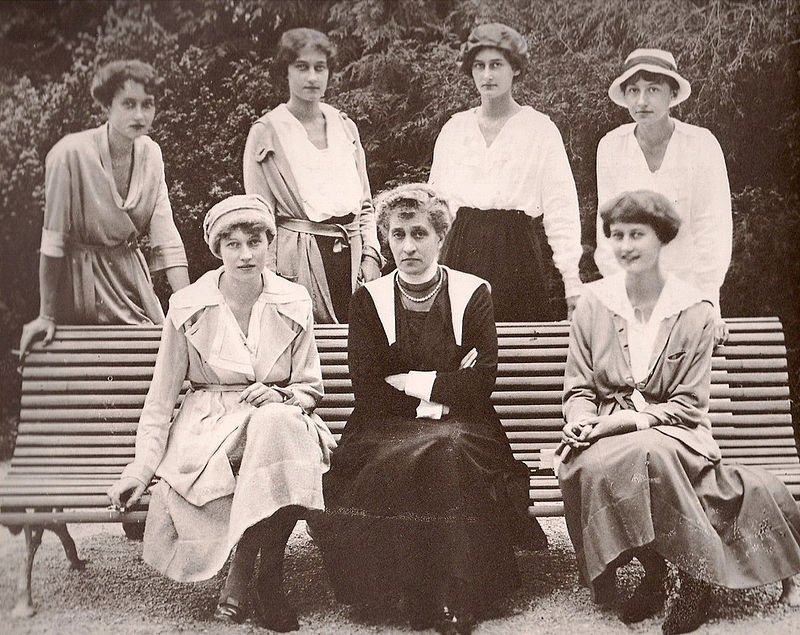by Susan Flantzer © Unofficial Royalty 2015

Photo Credit – Wikipedia
Born on July 24, 1817, in Biebrich Palace in Wiesbaden, Duchy of Nassau, now in Hesse, Germany, as Adolf Wilhelm August Karl Friedrich, His Highness The Hereditary Duke of Nassau. Adolphe was the eldest son and the third of the eight children of Wilhelm, Duke of Nassau and his first wife Princess Louise of Saxe-Hildburghausen.
Adolphe had three brothers and four sisters:
- Princess Auguste of Nassau-Weilburg (born and died 1814)
- Princess Therese of Nassau-Weilburg (1815 – 1871); married Duke Peter Georgievich of Oldenburg, had issue
- Prince Wilhelm of Nassau-Weilburg (1819 – 1823)
- Prince Moritz of Nassau-Weilburg (1820 – 1850), unmarried
- Princess Marie of Nassau-Weilburg (1822 – 1824)
- Prince Wilhelm of Nassau-Weilburg (1823 – 1828)
- Princess Marie of Nassau-Weilburg (1825 – 1902), married Hermann, Prince of Wied, had issue including Elisabeth of Wied who married King Carol I of Romania
From his father’s second marriage to Princess Pauline of Württemberg, Adolphe had four half-siblings:
- An unnamed daughter (born and died 1830)
- Princess Helena of Nassau (1831 – 1888), married George Victor, Sovereign Prince of Waldeck and Pyrmont, had issue including Emma who married King Willem III of the Netherlands and Helena who married Prince Leopold, Duke of Albany, Queen Victoria’s youngest son
- Prince Nikolaus of Nassau (1832 – 1905), married, morganatically, Natalia Alexandrovna Pushkina, Countess of Merenberg, daughter of the Russian author Alexander Pushkin, had issue
- Sophia of Nassau (1836 – 1913), married King Oscar II of Sweden, had issue, the present Belgian, Danish, Norwegian and Swedish royal families and the Luxembourg grand ducal family descend from this marriage

Adolphe before 1830; Credit – Wikipedia
On August 20, 1839, Adolph’s father died and Adolph began a 27-year reign of the Duchy of Nassau. Adolph married Grand Duchess Elizabeth Mikhailovna of Russia, daughter of Grand Duke Mikhail Pavlovich of Russia and granddaughter of Paul I, Emperor of All Russia, on January 31, 1844. The couple was very happy and delighted when Elizabeth soon became pregnant with their first child, but the happiness did not last. On January 28, 1845, 18-year-old Elizabeth died while giving birth to a daughter who also died. With the blessing of Elisabeth’s uncle Nicholas I, Emperor of All Russia, the grief-stricken Adolphe used Elisabeth’s dowry to build the Russian Orthodox Church of Saint Elizabeth in Wiesbaden where Elisabeth’s remains were buried.

Grand Duchess Elisabeth Mikhailovna of Russia; Credit – Wikipedia
On 23 April 1851, Adolphe married for a second time to Princess Adelheid-Marie of Anhalt-Dessau. They had five children, but only two lived to adulthood:
- Wilhelm (Guillaume) IV, Grand Duke of Luxembourg (1852–1912), married Infanta Maria Ana of Portugal, had issue
- Prince Friedrich of Nassau (1854 – 1855)
- Princess Marie of Nassau (born and died 1857)
- Prince Franz Joseph of Nassau (1859 – 1875)
- Princess Hilda of Nassau (1864–1952), married Friedrich II, Grand Duke of Baden, no surviving issue

Adelheid-Marie of Anhalt-Dessau; Credit – Wikipedia
The Duchy of Nassau supported the Austrian Empire in the Austro-Prussian War (1866). After Austria lost the war, the Duchy of Nassau was annexed to Prussia and Adolph lost his duchy. Adolph did make an agreement with Prussia for a severance payment and was also able to keep several of his palaces.
During its history, Luxembourg has been a part of a number of countries. At the Congress of Vienna in 1815, Luxembourg was made a Grand Duchy and united with The Netherlands. In 1839, following the Belgian Revolution, the Treaty of London partitioned territories and created the new Kingdom of Belgium and the new Grand Duchy of Luxembourg. The Grand Duchy of Luxembourg was still united with the Netherlands and King Willem I of the Netherlands was still the Grand Duke of Luxembourg. This rule continued until the death of King Willem III of the Netherlands in 1890. His successor was his daughter Wilhelmina, who could not inherit the throne of the Grand Duchy of Luxembourg due to the Salic Law which prevented female succession. Through the Nassau Family Pact, Adolph became the Grand Duke of Luxembourg on November 23, 1890.

Grand Duke Adolphe and Grand Duchess Adelheid-Marie of Luxembourg; Photo Credit – Wikipedia
73-year-old Adolphe was a Protestant in a Catholic country and knew little about Luxembourg, so he left the governing to his prime minister. On November 17, 1905, at the age of 88, Adolphe died at his summer home Schloss Hohenburg in Lenggries, Kingdom of Bavaria, now in the German state of Bavaria. Grand Duke Adolphe was buried at the burial chapel of Schloss Weilburg, a former residence of the House of Nassau and Dukes of Nassau-Weilburg, now in the German state of Hesse.
This article is the intellectual property of Unofficial Royalty and is NOT TO BE COPIED, EDITED, OR POSTED IN ANY FORM ON ANOTHER WEBSITE under any circumstances. It is permissible to use a link that directs to Unofficial Royalty.
Grand Duchy of Luxembourg Resources at Unofficial Royalty
- Grand Duchy of Luxembourg Index
- Line of Succession to the Throne of Luxembourg
- Luxembourg FAQs
- Luxembourg Orders and Honours
- Luxembourg Royal Burial Sites
- Luxembourg Royal Christenings
- Luxembourg Royal Dates
- Luxembourg Royal Residences
- Luxembourg Royal Weddings
- Profiles of the Grand Ducal Family of Luxembourg
- Rulers of Luxembourg
























